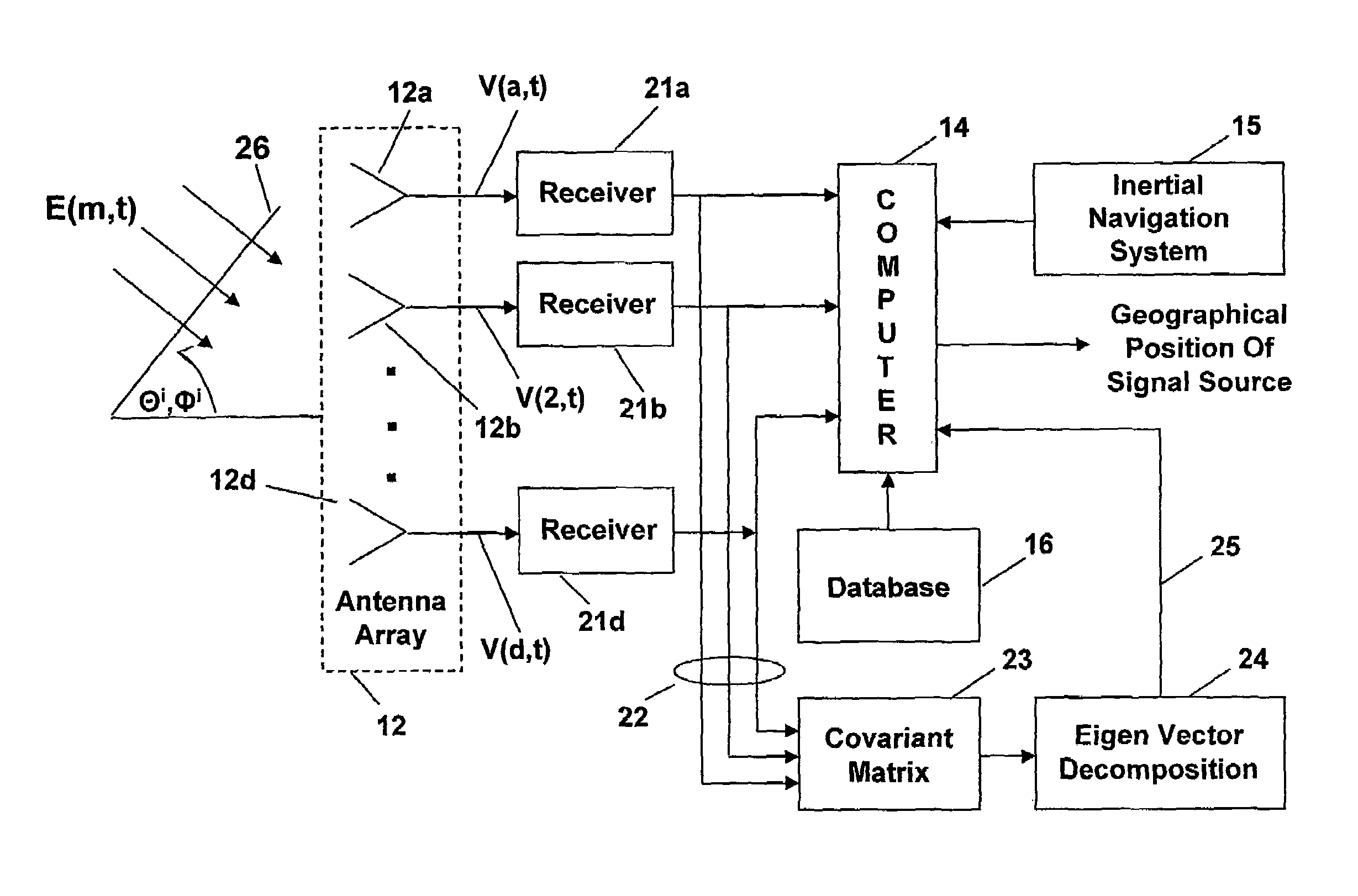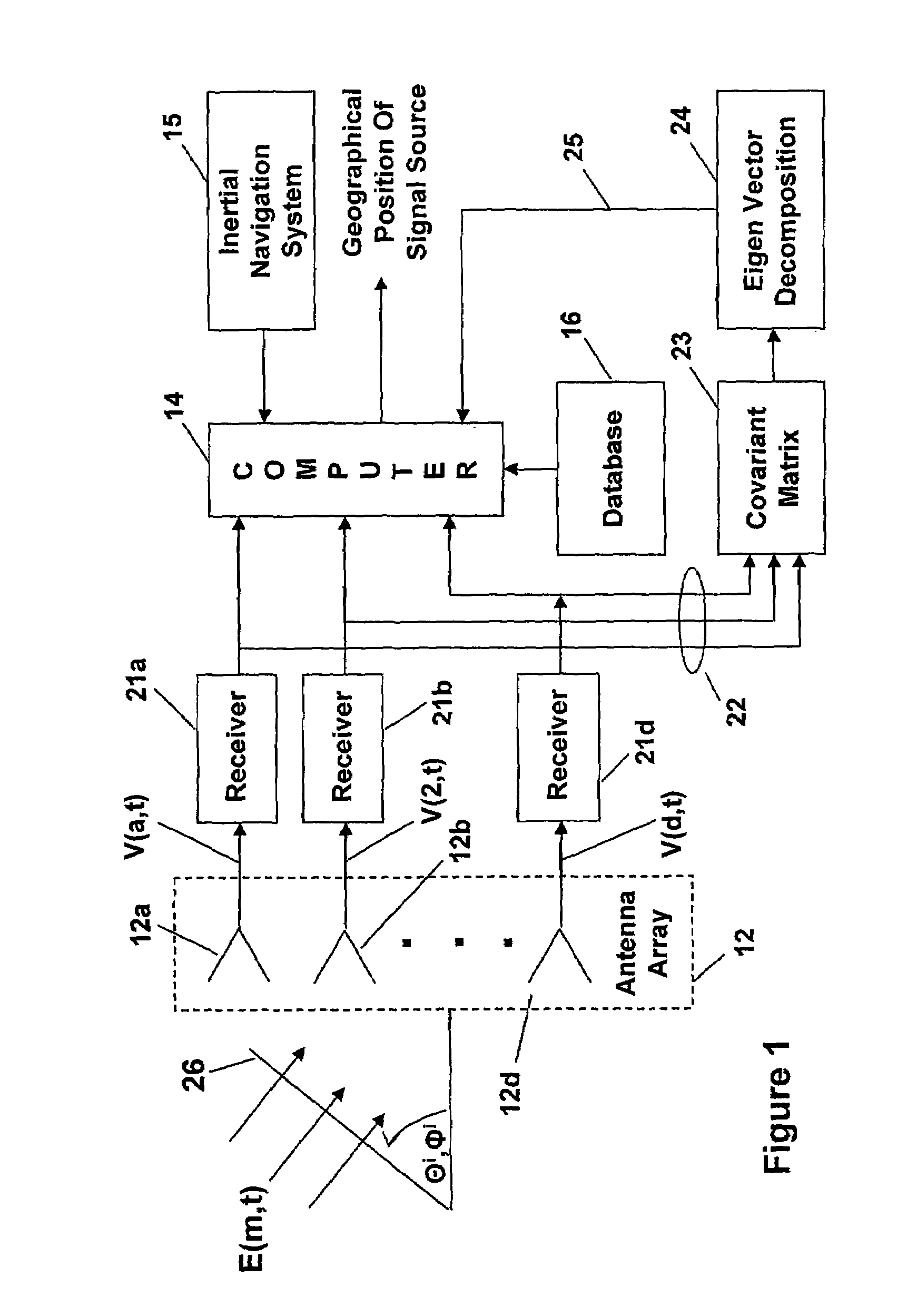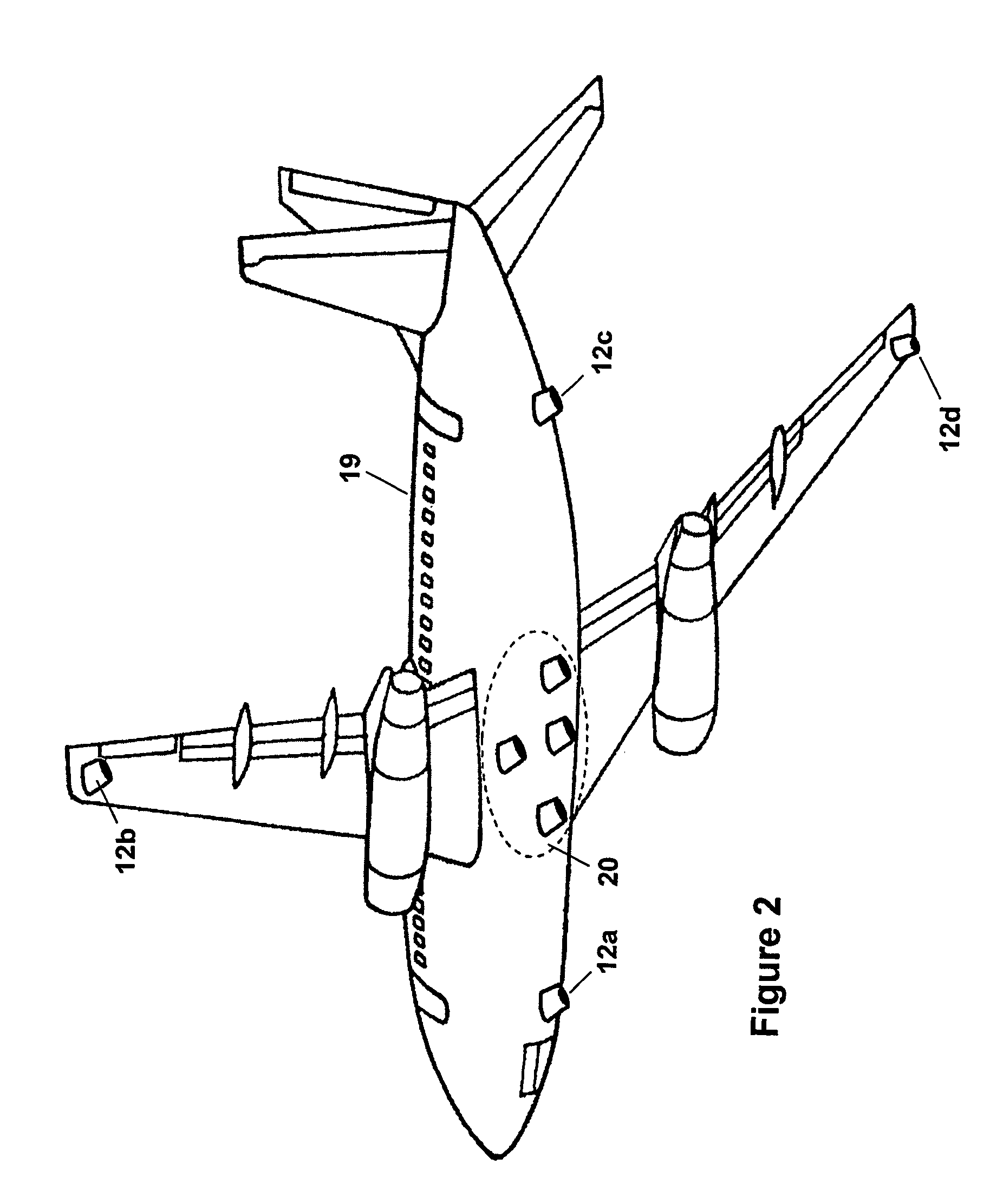Correlation interferometer geolocation
a correlation interferometer and geolocation technology, applied in direction finders, direction finders using radio waves, instruments, etc., can solve the problems of affecting correct ambiguity resolution, affecting the accuracy of transmitter location, and difficult to achieve long baselines, etc., to achieve the effect of the same or greater transmitter location accuracy
- Summary
- Abstract
- Description
- Claims
- Application Information
AI Technical Summary
Benefits of technology
Problems solved by technology
Method used
Image
Examples
Embodiment Construction
[0038]In the following detailed description and the drawings there are numerous terms used that are defined below:[0039]Ap1(θ,φ) and Ap2(θ,φ)=orthogonal calibration array manifolds[0040]Ar=antenna array response vector[0041]AOA=angle of arrival[0042]CIDF=Correlation interferometer direction finding[0043]CIGL=correlation interferometer geo-location[0044]DF=direction finding[0045]E=electromagnetic radio waves incident on the array of antennas[0046]LBI=long base line interferometer[0047]LOB=lines of bearing[0048]MBI=medium base line interferometer[0049]Na=number of antennas in the beam forming / direction finding array[0050](O)*=complex conjugate of (O)[0051]PI-CIGL=polarization independent correlation interferometer geo-location[0052]Q=signal eigenvector of the measured covariance matrix[0053]|R(xi,yj)|2=global correlation surface over a set of (xi,yj) grid points[0054]Rxx=measured covariance matrix[0055]SBI=short base line interferometer[0056]SNR=signal-to-noise ratio[0057]Vn(θ,φ) and ...
PUM
 Login to View More
Login to View More Abstract
Description
Claims
Application Information
 Login to View More
Login to View More - R&D
- Intellectual Property
- Life Sciences
- Materials
- Tech Scout
- Unparalleled Data Quality
- Higher Quality Content
- 60% Fewer Hallucinations
Browse by: Latest US Patents, China's latest patents, Technical Efficacy Thesaurus, Application Domain, Technology Topic, Popular Technical Reports.
© 2025 PatSnap. All rights reserved.Legal|Privacy policy|Modern Slavery Act Transparency Statement|Sitemap|About US| Contact US: help@patsnap.com



